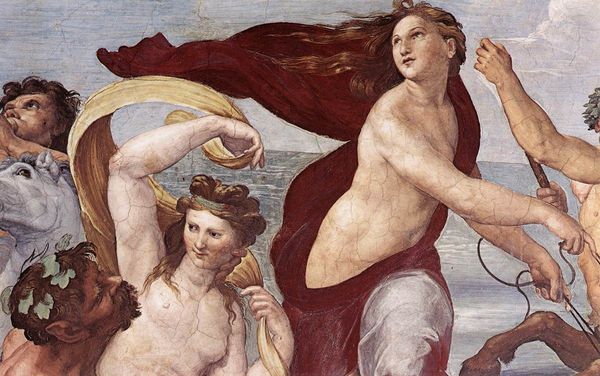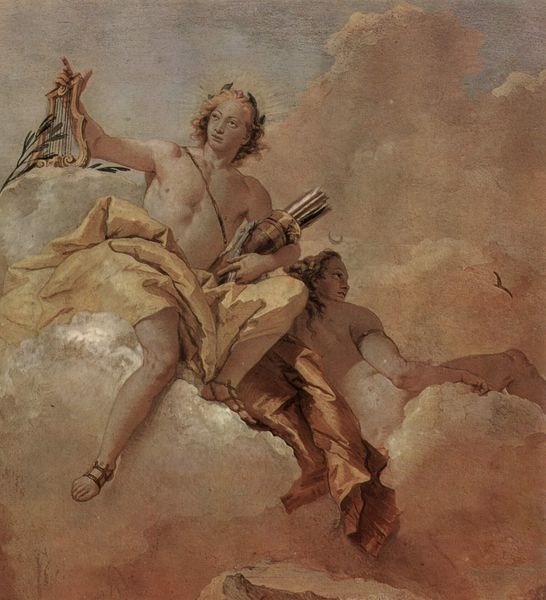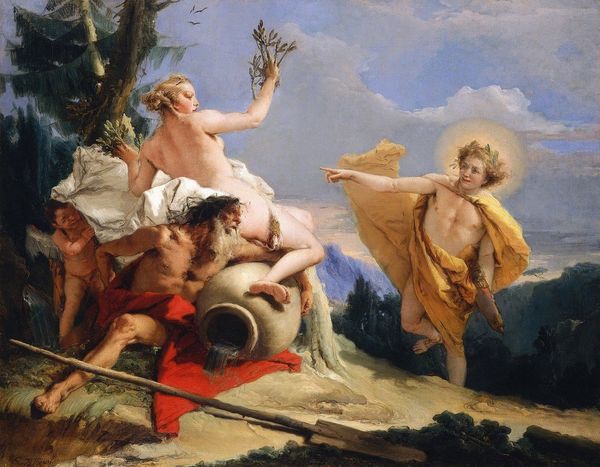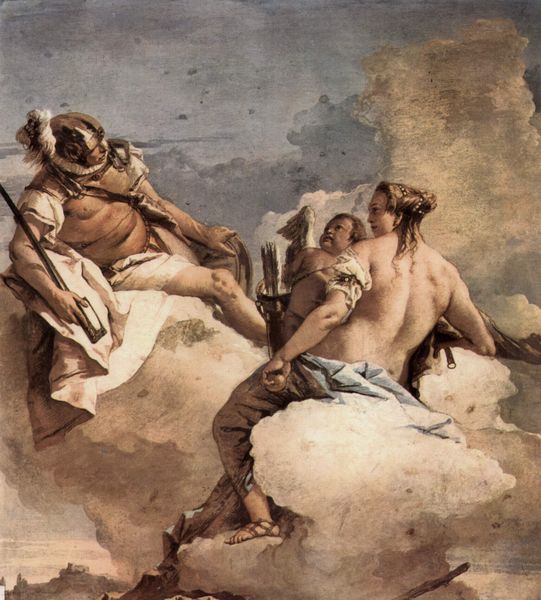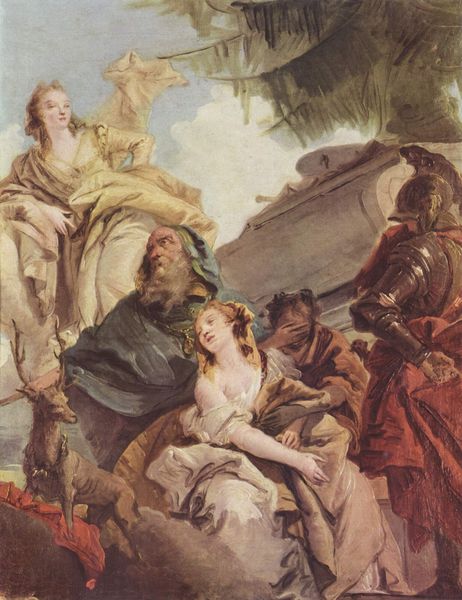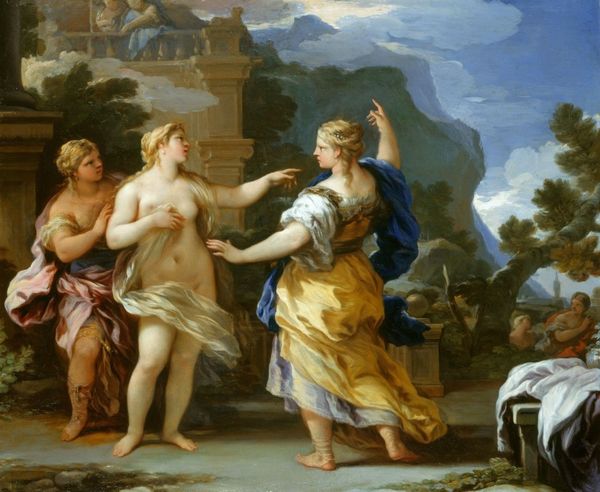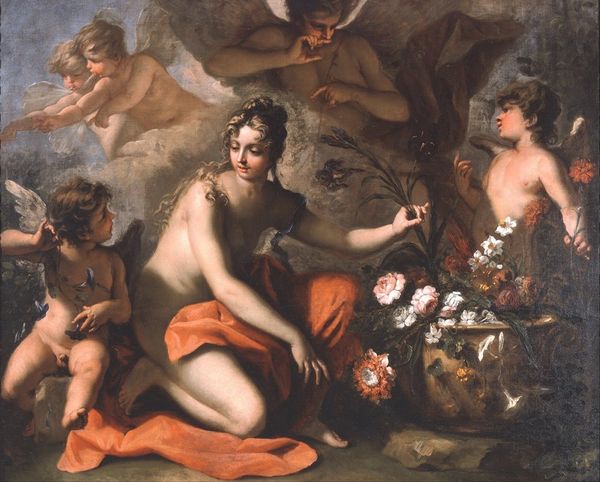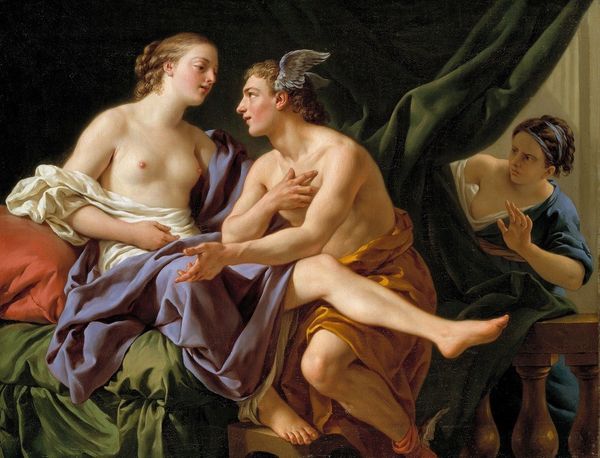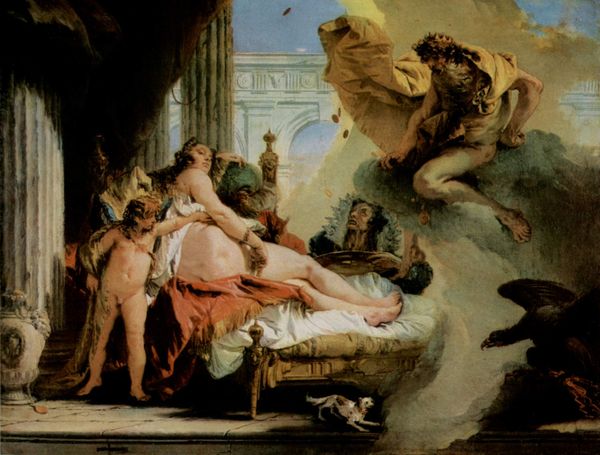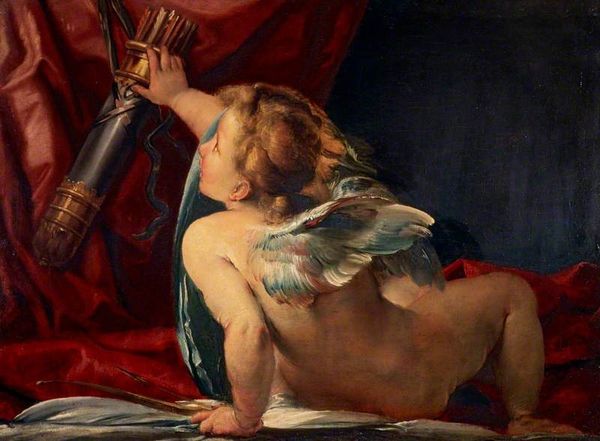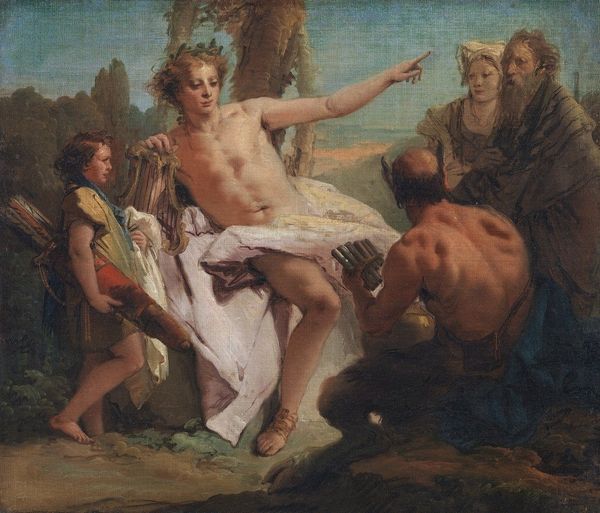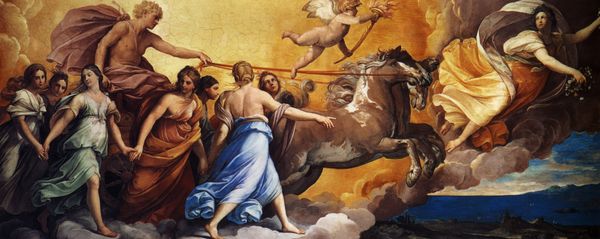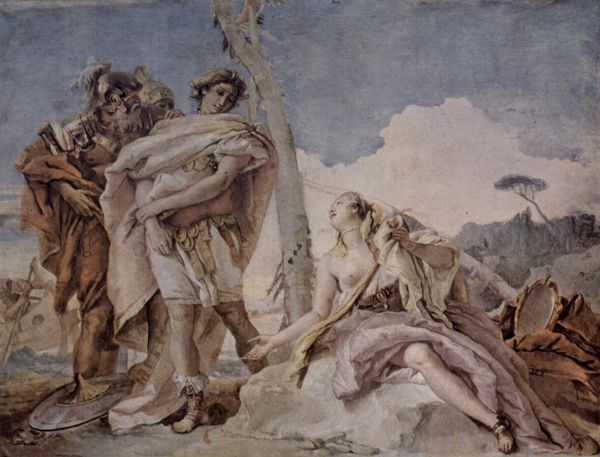
Copyright: Public domain
Curator: The light in this image immediately strikes me—it feels both celestial and a little bit dreamlike. Editor: Indeed. What we’re observing is Giovanni Battista Tiepolo’s “Apollo and Diana,” painted around 1757. Tiepolo, as you might know, was a master of Venetian painting during the Rococo period. He's working here with oil paints, a classic choice for the time. Curator: I see Apollo holding his lyre and Diana with her bow, set against this backdrop that seems to blur the line between earth and sky. This is heavily symbolic, of course—these are powerful deities embodying very specific domains and societal ideals. Editor: I find myself thinking about the pigments. Consider the process of grinding them, the sourcing of these materials. These rich yellows and creamy whites were derived from very specific geological locations. The human labor embedded in their production shaped the overall experience. Curator: It’s fascinating to consider the social contexts, too. Looking at the figures, their almost casual sensuality… it speaks to a certain aristocratic indulgence. The myths themselves provided frameworks for discussing power, gender roles, and desire, all of which were hotly contested in 18th-century society. Editor: Right. We have the embodied labor of Tiepolo himself— applying layer upon layer. How was the artwork originally displayed and commissioned? What was the space intended to evoke for those who first encountered it? This history shapes our understanding. Curator: These narratives often gloss over those dynamics, focusing instead on purely aesthetic value or technical skill. By engaging with feminist theory and cultural studies, we can understand the subtle ways the art encoded assumptions and biases, revealing deeper meaning. Editor: Yes. I mean, ultimately we’re considering how artistic labor intertwines with the larger history of class and consumption. The oil paint itself represents transformed natural resources brought into artistic production. Curator: Thanks to Tiepolo’s artistic craftsmanship, “Apollo and Diana” continues to prompt questions about human representation and how we're continually making sense of art in our world. Editor: A rich, complicated piece of art to be certain, made even richer through deeper considerations.
Comments
No comments
Be the first to comment and join the conversation on the ultimate creative platform.
